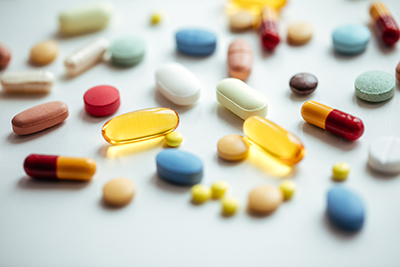Medicine
 Nanomedicine is the application of nanotechnology to the treatment and diagnosis of diseases. What can they be used for, what benefits do they bring and where are the developments in nanomedicine taking us?
Nanomedicine is the application of nanotechnology to the treatment and diagnosis of diseases. What can they be used for, what benefits do they bring and where are the developments in nanomedicine taking us?
Medicines are developed and commercialised to prevent, cure or treat the symptoms of a disease or a medical condition. They contain an active substance that cures the disease or improves its symptoms, as well as inactive ingredients, known as excipients, that help provide the desired texture, stability or vehicle for the medication. Take a tablet of ibuprofen, a common painkiller, as an example: ibuprofen is the active substance that inhibits an enzyme involved in the synthesis of molecules that cause inflammation pain and fever, while inactive ingredients such as starch, lactose or silica can be used to make up the tablet.
What is the difference between nanomedicines and traditional medicines?
Nanomedicines are molecular systems made up of several different components – the active substance and one or more excipients or other materials – engineered at nanoscale to optimise different functions. Nanotechnology has so far been largely applied to improve the physico-chemical properties of the active substance. For example, it can be used to improve the solubility of the substance, but also to enable the substance pass through the immune system so it can stay in the blood long enough to deliver its function. A large number of drug candidates synthesised every year by pharmaceutical companies show poor water solubility. A poorly soluble drug will take a long time to dissolve in your stomach, reducing its pharmacological effects when given orally. Nanotechnology can offer a solution also to this type of problems.
Nanotechnology can help to deliver medicine especially to those cells or organs where it is most needed. Nanomaterials can be used as carriers for active substances that otherwise could not be used because of their high toxicity, for example, some anticancer drugs, targeting their delivery to specific areas only. The result is the opportunity to develop medicines that are less toxic and more potent.
Nanomedicines go through the same detailed safety assessment and authorisation process as any other pharmaceutical product in the EU. The European Medicines Agency (EMA) gives advice on the authorisation process and guidance on the development of medicines in the area of nanotechnology.

 More on the EUON
More on the EUON